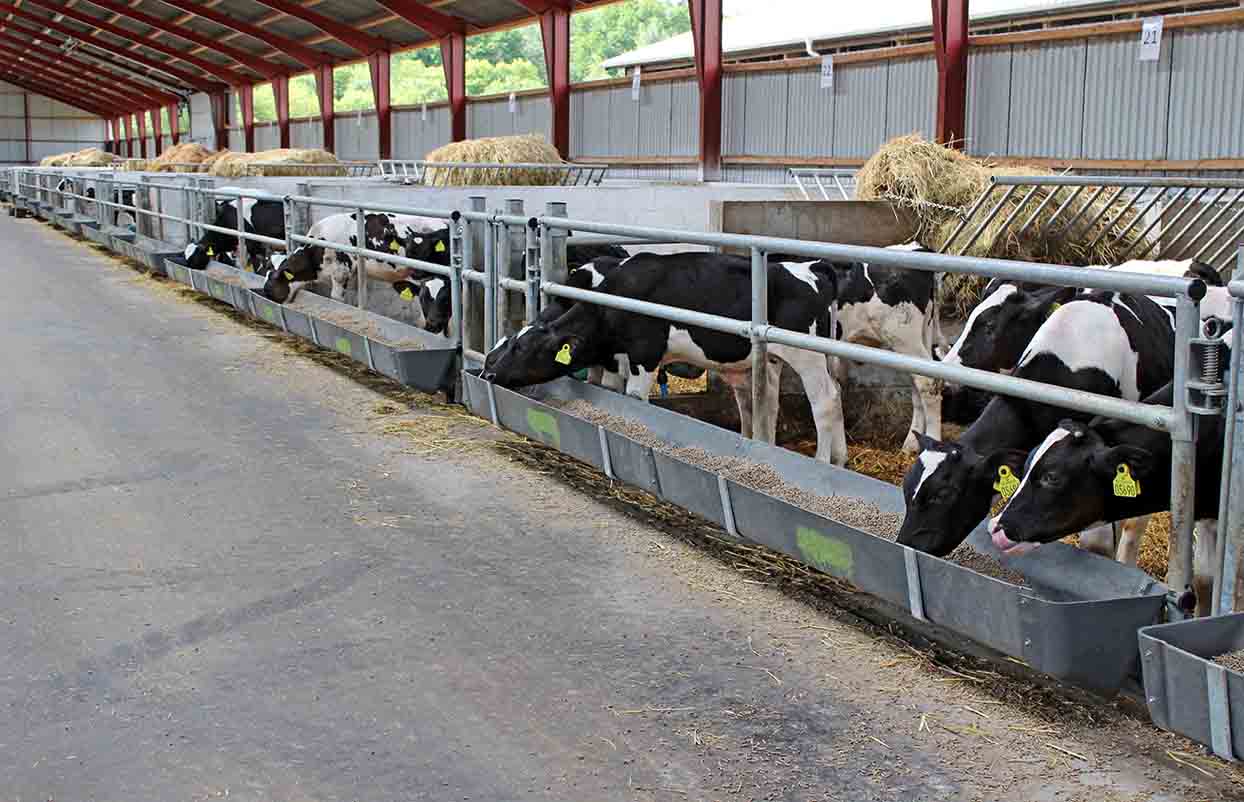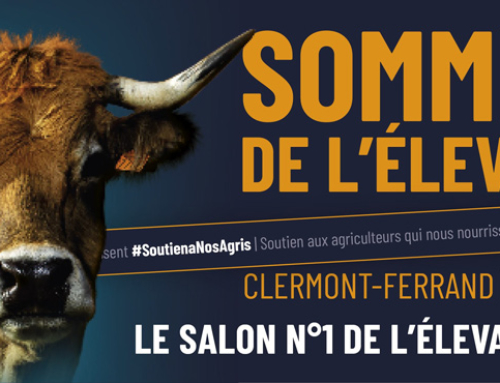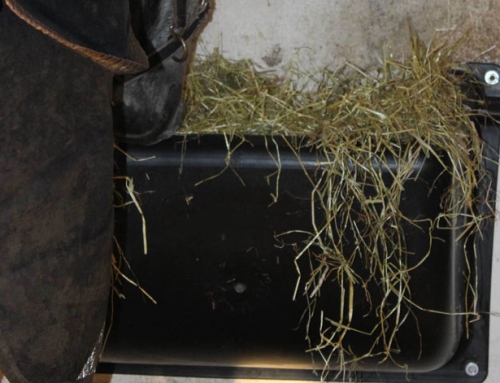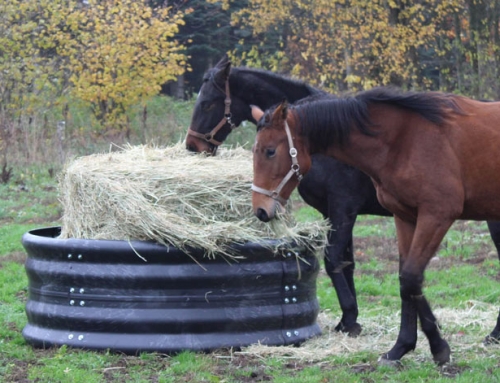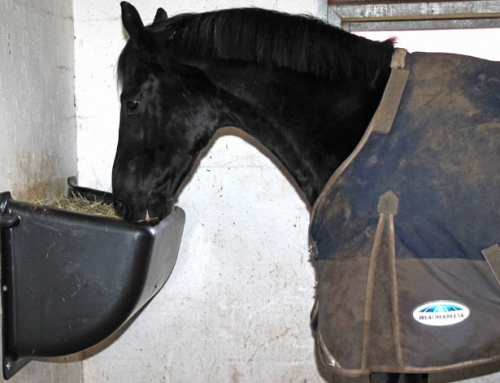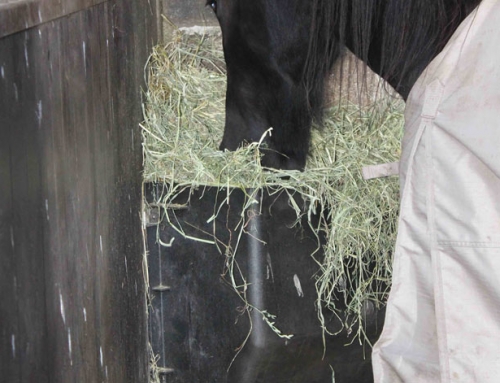The calves should have roughly the same amount of milk replacer/h2>
A hierarchy exists among calves that are kept in group pens, in which the strongest calves call the shots. Restrictive feeding of milk replacer means that the strongest calves drink first. Calves that are not able to get to the trough do not get any milk, as the other calves continue to drink until the trough is empty. Therefore, when using milk replacer in a long trough, it is important that all of the calves can get to the trough at the same time. But even then there may still be drawbacks, which can cause problems for the weakest calves.
We solve the problem with our modular long trough. You may read more about cow-calf producer Peer Nygaard Christensen’s experiences here.
A four metre milk trough ensures that the calves receive milk at the same time
Peer Nygaard Christensen is a cow-calf producer from Frederikshavn, who fattens around 1600 veal calves a year in newly constructed buildings. The calves are purchased from local milk producers. In addition to cow-calf production, there is also crop production at the farm. The smallest calves are kept in group pens with up to 12 calves per pen. The front of the pens are approximately 4 metres long. Initially, the calves receive milk replacer in a long trough.
To provide the highest possible support to the weakest calves, Peer chose the OK modular-feeder no. 1970. The trough consists of modules that are two metres long and which can be bolted together to form a single long trough. On the farm in Frederikshavn, two modules are put together to make a four metre milk trough that is equal to the length of the pen. In addition, there are two end pieces (OK no. 1975) for every four metre trough.
During a visit to the farm, Peer told us:
”Had I chosen several troughs instead of one long one, then I would have had to fill one trough at a time. The strongest calves would almost finish the first trough before I would manage to fill the next one. Then they would overpower the weakest calves. As a result, the weakest calves would not get enough milk and the calves would grow at different rates”.
By having a four metre long trough, Peer is aiming for his calves to gain weight more evenly. Once the calves have drunk their daily milk allocation, the troughs are filled with fodder.
Furthermore, according to Peer, there should be plenty of space at the trough when you fill it with milk. Otherwise the calves will leave you with little or no room to fill the trough.
The mounting for the trough is made from iron and hung over the feeding fence’s 1.5-inch pipe. Peer has been responsible for the design together with his herdsman and a blacksmith. Both the trough and the mounting can be removed to make emptying the pen easier. The different module parts are fastened together using a black glue.
May also be used for other animals
The principle behind the mounted trough is a really good one. It would be easy to make a version that was adapted to smaller pipes. There could be a mount for a 1-inch pipe, which is a more conventional pipe dimension for sheep, for example.
Approved quality product
Like all our other stable products, our modular feeders are made from plastic and additives, which are all approved for food use.
